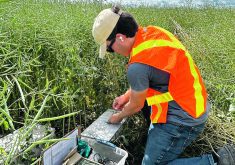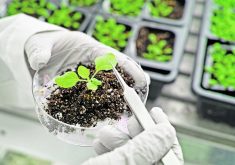Molecular biologists and entomologists believe RNA interference could solve insect resistance because the technology silences specific gene sequences in crop pests.
However, they offer conflicting responses when asked if insects can develop resistance to RNAi technology.
Vlad Zhurov, a research associate at Western University in London, Ont., and a member of an international team studying the potential of RNAi to control spider mites, said it would be difficult for insects to overcome the technology.
“It will require a very dramatic genetic change in the pest … to adapt to the double stranded RNAi. What will be required is almost a complete rearrangement of the gene that we are targeting.”
Read Also

Feds propose overhaul of chronic wasting disease control program
Chronic Wasting disease control program getting updated by Canadian Food Inspection Agency with feedback encouraged from producers.
Marcé Lorenzen, a North Carolina State entomologist who is studying RNAi applications for the red flour beetle, isn’t so sure. She said the technology is powerful, but evolution cannot be underestimated.
“Just like insects develop resistance to B.t., they can develop resistance to RNAi,” she said.
“I think it (gene silencing) is a big deal, but we need to be ever evolving … and looking at what is the newer mechanism of controlling pests.”
Katherine Artymovich of Michigan State University’s microbiology and molecular genetics department said in a paper published in Basic Biotechnology that RNAi is part of the solution.
“Due to evolution, a one-size-fits all solution to solve insect-caused crop damage may never be achieved,” she said.
“Pests will always find a way to resist natural and genetically engineered toxic effects…. RNAi use in plants has the potential to be used with B.t. crops and other pesticides in order to decrease damage and increase crop yield.”














